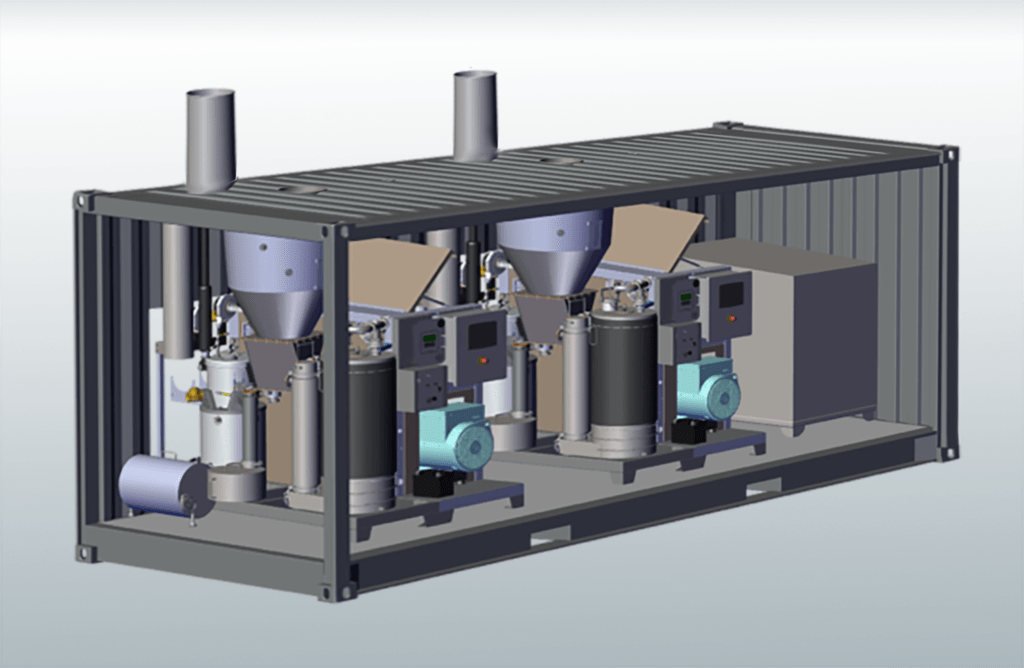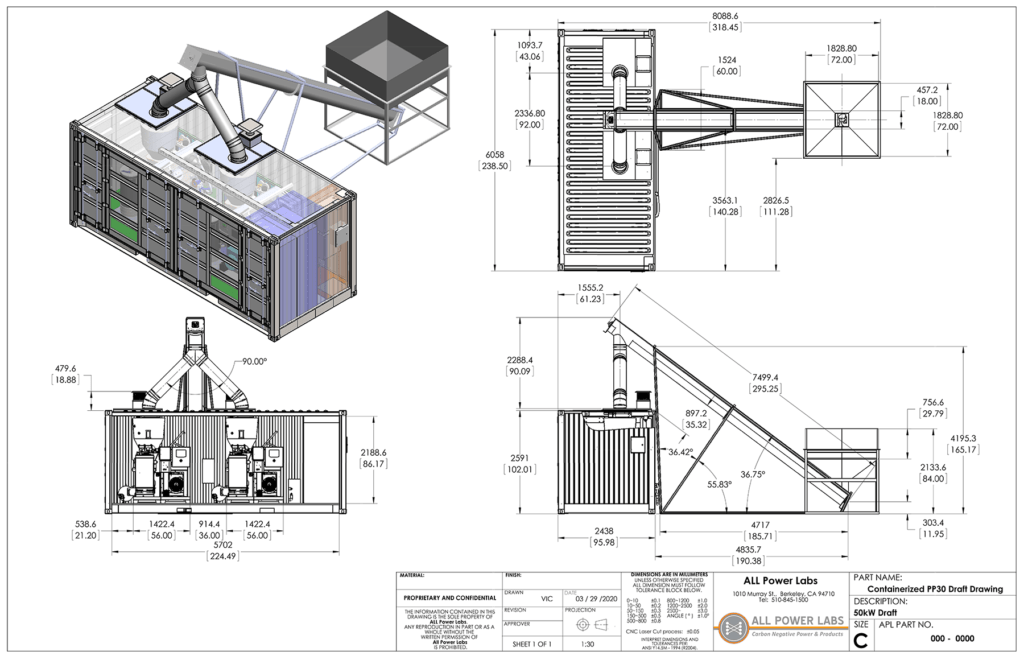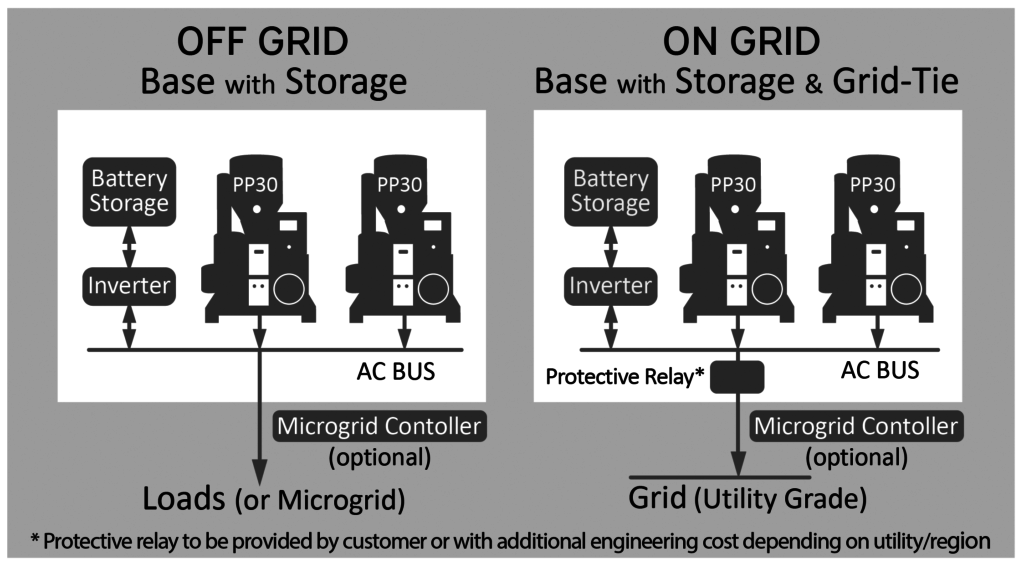
The 80 kWe containerized Power Pallet system also provides 100 kWth of thermal energy via the integrated CHP systems from the two PP30s. Also included is a battery storage system and inverter to allow the continuous 50 kW output of the Power Pallets to be combined with an additional 30 kW from the batteries for a combined intermittent output of 80 kWe. These are bespoke systems that will be designed and configured to your specifications with the ability to add more or less battery capacity as needed. They are a complete biomass power generation solution that converts woody biomass into electricity. It is a compact, self-contained, and fully automated system—from biomass in, to electricity and heat out.
The Power Pallet PP30 is our most recent version of our biomass gensets and comes standard with grid-tie electronics for taking advantage of applications such as microgrids, feed-in tariffs, and net energy metering schemes, as well as heat exchangers for heating water for combined heat and power (CHP) applications offering a total system efficiency of up to 80%.
The Power Pallet is distinguished among biomass power generation systems by its compact size, ease of installation, and affordable price. Its integration of CHP capabilities with power generation and woody biomass disposal make it an ideal candidate for applications which find value in heat, electricity, and woody debris disposal. The PP30 is a self-contained biomass unit that requires additional balance-of-system engineering for grid connection or use as an islandable or non-islandable microgrid.
Due to its compact nature and dispatchable source of renewable energy it is a valuable component for hybrid microgrids that use solar and storage as the primary distributed renewable energy source. The addition of this type of technology increases microgrid resilience with on-demand generation.

The HYBRID version has additional inverter-based technology with integrated storage capacity yielding up to 80kW and 100 kWth of peak capacity. This HYBRID unit opens up additional use cases where short spikes of energy are needed (e.g. motor start up) while also providing a more standard distributed energy resource that can be added to existing microgrids with minimal complication.
